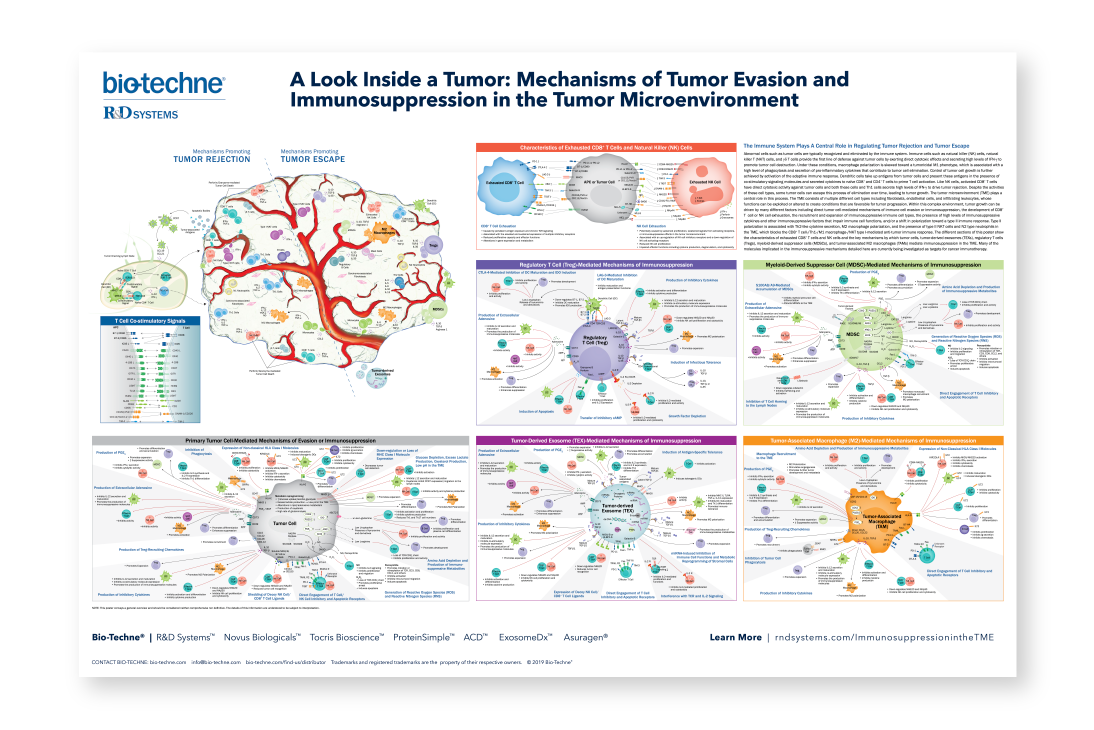Summary

The tumor microenvironment is a complex network of different cell types that can either suppress or promote tumor growth. This microenvironment includes stromal cells, endothelial cells, and a variety of immune cells. Innate immune cells, such as natural killer (NK) cells, NKT cells, and gamma delta T cells provide the first line of defense to promote cancer cell destruction, while cells of the adaptive immune system, such as CD8+ T cells and CD4+ Th1 cells are primed and activated to function as the second line of defense to drive tumor rejection. In spite of the activities of these immune cells, cancer cells can develop changes over time that allow them to escape recognition and elimination by the immune system. Genetic instability and continuous cancer cell division can lead to a decrease in tumor immunogenicity. This, coupled with NK cell and T cell exhaustion, and an increase in the presence of immunosuppressive cell types in the tumor microenvironment, can allow cancer cells to evade immune detection and result in tumor growth.
Request our Tumor Microenvironment poster to learn more about:
- Different immune cell types involved in tumor rejection and tumor escape
- Characteristics of exhausted NK and CD8+ T cells
- Tumor cell-mediated mechanisms of immune cell evasion and immunosuppression
- Pathways by which regulatory T cells, myeloid-derived suppressor cells, and tumor-associated macrophages promote tumor escape
Request Literature
To access this literature content please fill out the form below.